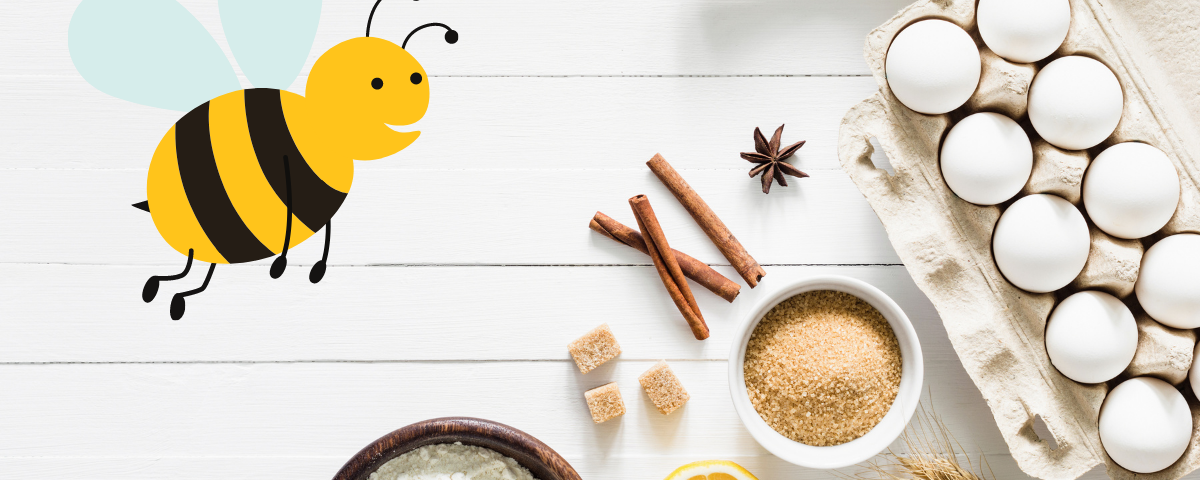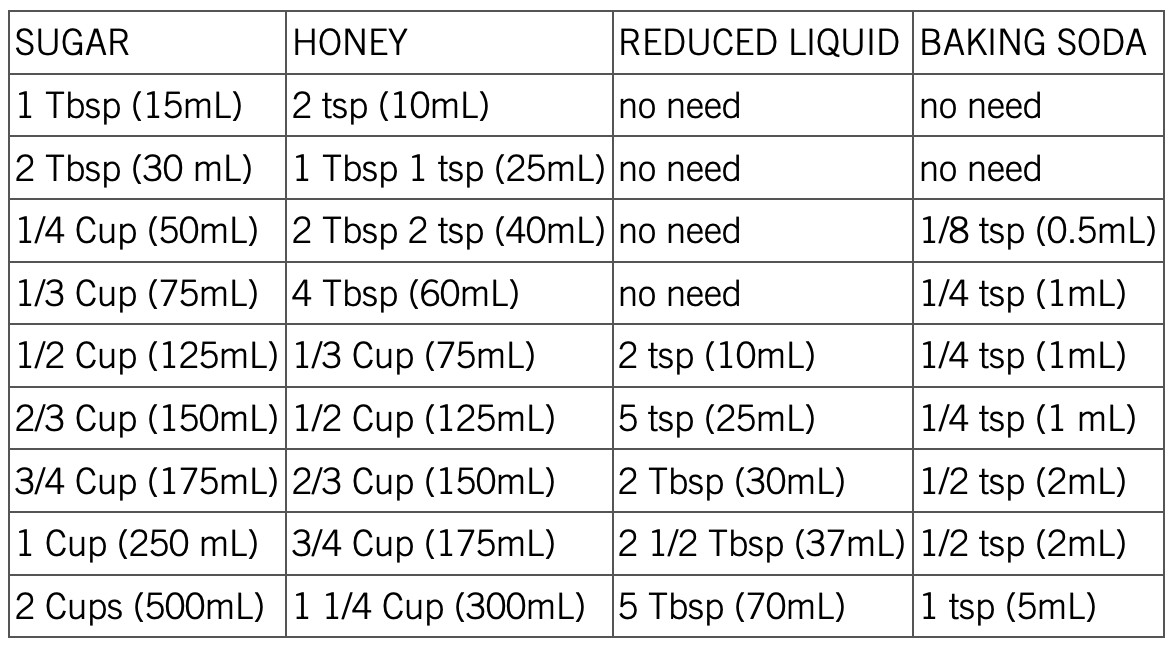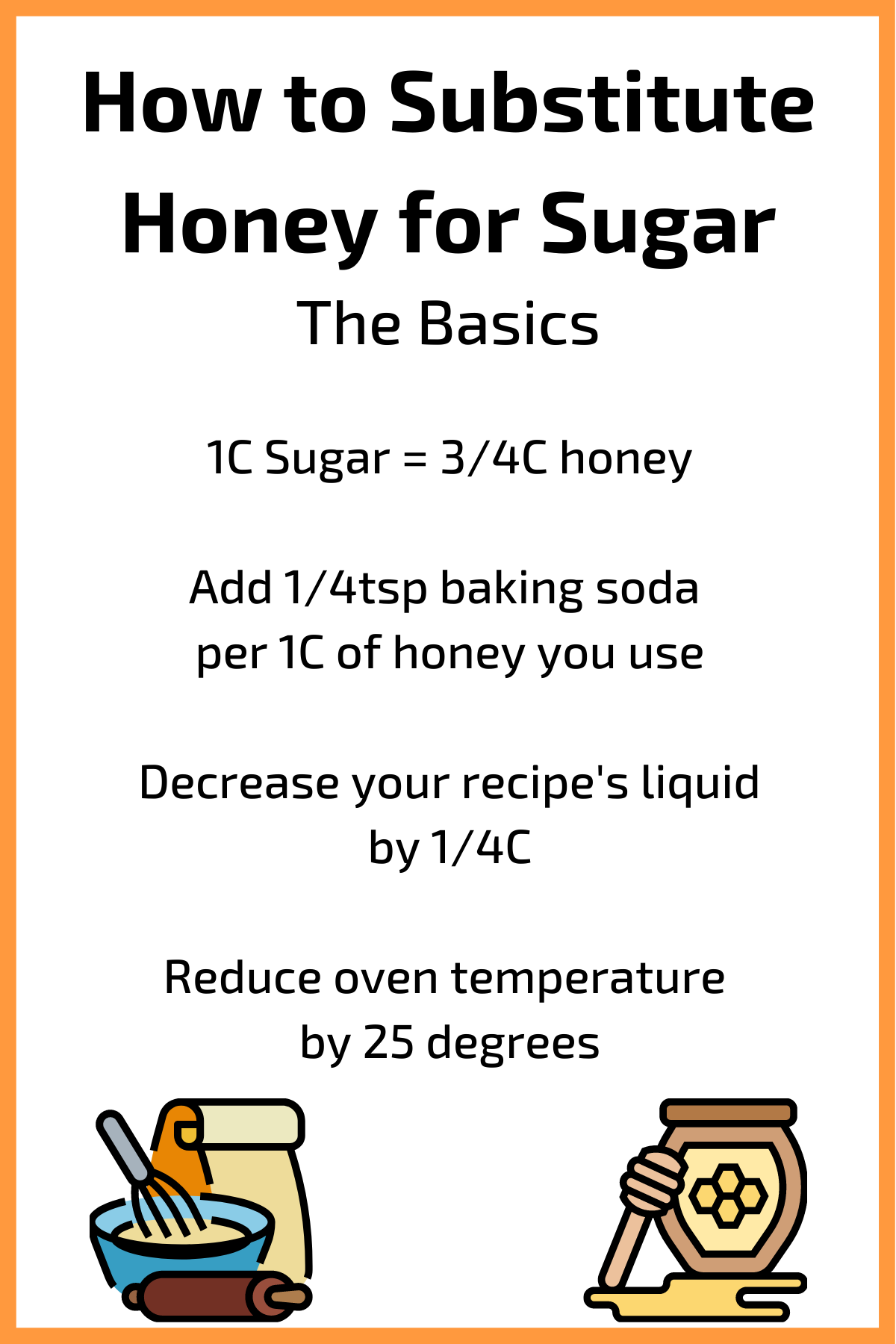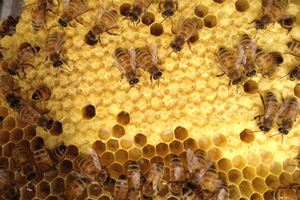- All-In-One Beekeeping for the Bees
- +1-608-728-8233
- info@beepods.com
Substitute Honey for Sugar in Your Favorite Baking Recipes – It’s Easier Than You Think!

 Beekeepers often find themselves with a nice supply of honey toward the end of their bees’ season. While you may already have a few favorite ways to use honey in the kitchen, whether in tea or on toast, did you know you can substitute honey for sugar in your favorite baking recipes?
Beekeepers often find themselves with a nice supply of honey toward the end of their bees’ season. While you may already have a few favorite ways to use honey in the kitchen, whether in tea or on toast, did you know you can substitute honey for sugar in your favorite baking recipes?
Substituting honey for sugar isn’t as simple as switching out a recipe’s recommended sugar portion for that amount of honey. In fact, exchanging these sweet ingredients involves a bit of science! Don’t worry, though – we’ve got it all figured out for you. In today’s blog, we’re giving you the lowdown on how you can substitute honey for sugar in your favorite baking recipes and enjoy your bees’ sweetest product in new ways!
Why Baking With Honey is a Great Idea
Honey is a delicious and natural sweetener that beekeepers tend to have pretty easy access to. Why wouldn’t you want to try baking with it? Here are a few reasons to consider.
For starters, honey is a hygroscopic material. That means it absorbs moisture from the air and attracts water. This property helps any baked good stay moist for longer than sugar-baked treats will. Which means you can enjoy the leftovers longer!
Honey is also unprocessed and an environmentally-friendly ingredient to use in the kitchen. It’s naturally sweeter than white sugar is, so when you substitute honey for sugar in your recipes, you can actually use less of it.
From a nutritional standpoint, honey’s properties are thought to be a healthier alternative to what you’ll find in granulated sugar. Here are some points for comparison:
- Sugar is 50% fructose and 50% glucose while honey is 40% fructose and 30% glucose
- Sugar is higher on the glycemic index than honey = raises blood sugar levels faster
- Honey has more calories than sugar, but you can use less of it for the same sweet satisfaction
- Sugar is harder for your body to digest than honey
Choose Your Honey
Not all kinds of honey are the same. If the honey your bees produced this year is that beautiful, light-golden hue, you’re in luck! Lighter honey is more neutral in taste and ideal for using in your baked goods. If the honey you have is dark, consider saving it for another use in the kitchen. Darker honey has a stronger taste and isn’t great for substituting for sugar.
If you’re not using your own bees’ honey, and instead of purchasing honey, you may have a variety to choose from. For your reference, Clover, Orange Blossom, Buckwheat, and Linden honey are popular picks for baking. Clover honey is the fan-favorite for use in baked goods. Orange blossom is also favored for baking recipes, while Buckwheat is great for foods like pancakes, and Linden honey is aromatic and herbal.
Determine Your Honey Measurement
Figuring out how much honey you need to use in a recipe instead of sugar takes a little math, but it’s not rocket science!
Honey is naturally sweeter than sugar. In fact, it can be two to three times sweeter. You simply don’t have to use as much of it as you would white sugar. For every 1C of sugar your recipe calls for, you can use ¾C honey and achieve the same level of sweetness. Further down in this blog, there’s a helpful conversion table you can refer to.
Adjust Your Liquids
One of the most significant differences between sugar and honey, when it comes to sweetening your recipes, is that sugar is dry and honey is a liquid.
Because you are adding a liquid to your recipe when you substitute honey for sugar, adjusting the amount of the primary liquid (often milk or water) in your recipe will help you avoid a finished product that is excessively moist, or that won’t bake well. Specifically, if your recipe will require that you use 1C of honey or more, you will need to reduce the other liquids in your recipe by ¼C.
Use Baking Soda as Needed
Honey is a heavier and more dense sweetener than sugar. So, when you substitute honey for sugar in a recipe, if the recipe calls for 2T+2tsp or more, you will need to add baking soda to lighten things up and cut down the honey’s natural acidity.
Acids can prevent baked goods from rising in the oven, so baking soda is key to creating a delicious end-result. Honey’s natural acids can also cause unwanted browning when they’re baked, and baking soda counteracts that effect.
This handy table from Hello Flavour provides a look at the portions to use when you substitute honey for sugar, what amount of liquid you need to reduce, and how much baking soda you should add.

Courtesy of HelloFlavour.ca
Turn Down Your Oven
Because honey heats (and burns) faster than sugar does, you have to be aware of how hot your oven is when you’re baking with it. A good rule of thumb is to decrease your oven temperature by 25 degrees in order to ensure your goodies don’t overbake.
When you’re baking with honey, your best bet is to use light-colored baking tins tented with tinfoil to prevent the top from becoming overdone. Place your pan on a middle-positioned oven shelf, and consider placing a tray of water on the shelf below it to create steam and deflect some of the heat.
Now, grab your favorite baking recipe and your honey, and see what you can whip up!
Looking for recipes created with honey in mind?
Check out the Beepods Recipe E-Book. It’s full of delicious treats, eats, home remedies, and more, all featuring honey and other bee products!
Kanoe Riedel
Latest posts by Kanoe Riedel (see all)
- This Spring, Don’t Forget Why Bees Are So Important to Our Environment - March 26, 2021
- 11 Awesome Uses for Your Stored Honeycomb - March 2, 2021
- How the Right Beekeeping Equipment Makes Inspections Better for Beekeepers and Bees - February 12, 2021




